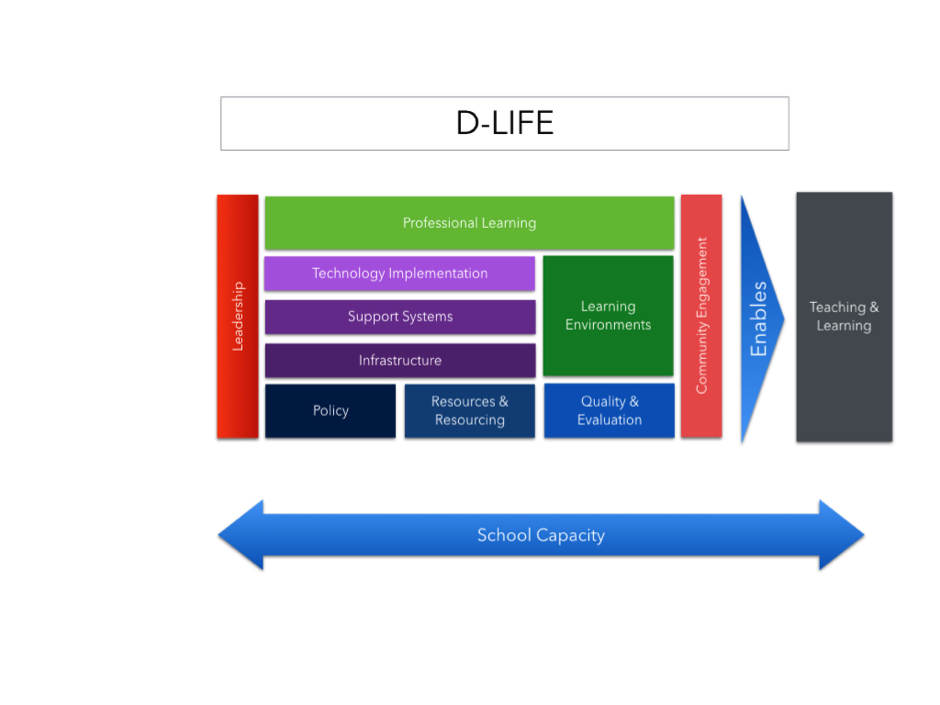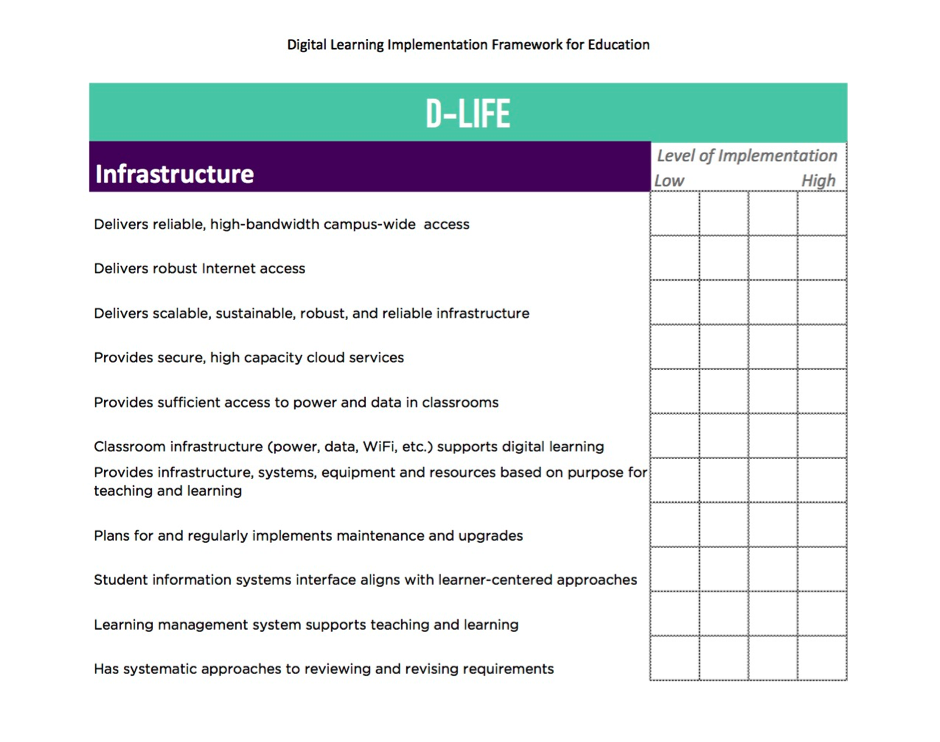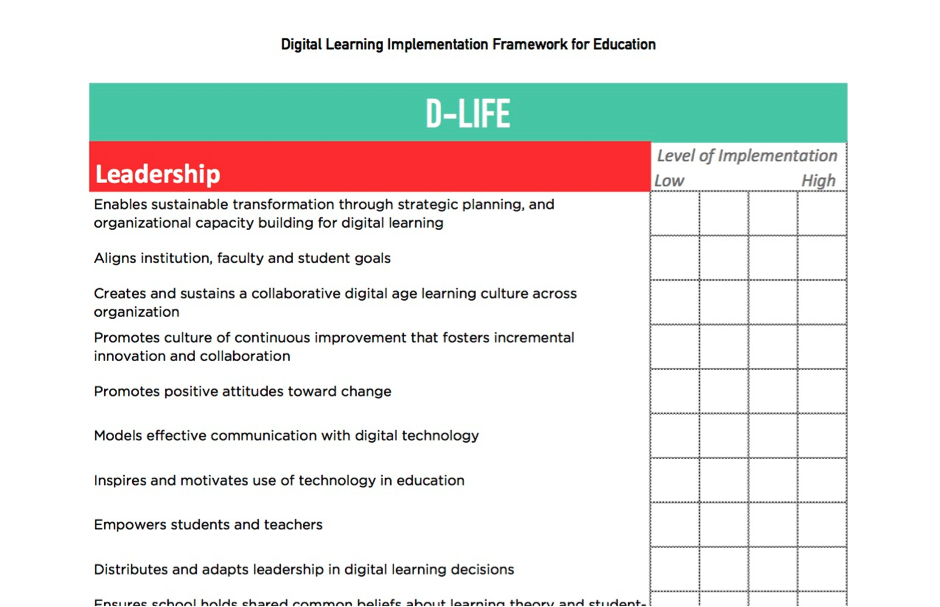by Christine Haynes
Sometimes referred to as e-learning, blended learning, or digital learning, learning in a digital age is no longer restricted by time, place, space, or pace. Likewise, schools have grown in their complexity in many ways, including in their adoption of technology as an integral part of learning. With technology now touching the lives of billions of learners of all ages across the globe, the reaches of this change affect learning in and beyond the classroom, posing new challenges for school leaders to build organisational capacity for such change. As technology becomes ubiquitous, everywhere, all the time, and integral to life and learning, our schools need to adapt to empower students and teachers. However, introducing mobile, personal technology into schools is not as simple as resourcing and purchasing, or learning to use the technology. Today’s technologies do not work in isolation. They are highly connected, mobile and personalised and, to be leveraged effectively, need to extend learning beyond what was possible without them.
With the recent ‘mobile miracle’, mobile technology is now used by more than 7 billion people world-wide and connectivity reaches to the far corners of the earth impacting ‘broad societal and economic transformations’ (ITU 2016, p. 157). Furthermore, it is no longer deemed optional to access technology for learning as technology is embedded into both the Australian Curriculum and our lives. The marketplace has also responded with products that are free for education systems including G-Suite for Education, and Edmodo, who together claim over 140 million users in the K-12 space. Additionally, a myriad of software application providers are moving from higher education into the K-12 learning space. Moreover, an ever-expanding digital marketplace is creating unprecedented options with thousands of educational apps and an estimated marketplace growth of over 34 per cent from 2014 to 2019 (Technavio 2017).
At the same time, school leaders need to navigate these widespread and rapidly advancing organisational changes without the benefit of formal training or experience to draw upon. Similarly, those responsible for technology leadership in schools have lacked a combination of both technology leadership and educational leadership experience. While technical directors, where afforded, often bring rich experience in the IT industry and technical solutions, they rarely have educational leadership experience. On the other hand, ICT coordinators and integrators while understanding education deeply, seldom bring industry-standard technical expertise. Furthermore, it is unprecedented for schools to have the equivalent of a Chief Technology Officer (CTO), someone with a breadth of experience in both technical and educational leadership involved in school executive decision-making. Ultimately the school leaders, principals, business managers, campus leaders, and curriculum leaders find themselves ill-equipped for navigating technology-infused educational challenges in a digital age.
Teachers have long been the driving factor behind successful teaching and learning, including with technology (Hine 2011). However, without an empowering organisation behind them, teachers face many barriers to effective teaching and learning when technology is involved (Barbour 2014). For international schools, this challenge is often compounded by teacher transiency where capacity built in individual teachers is not a lasting investment for the organisation.
Global Study to Equip School Leaders to Navigate a Digital Age
To help school leaders with their efforts in organisational evaluation and strategic planning, the Digital Learning Implementation Framework for Education (D-LIFE) was created through a global study of educational technology experts in International Baccalaureate (IB) schools (Haynes 2017). Residing in 15 countries and with experience in many more, the expert panel included highly experienced educational technology leaders experienced in guiding schools in learning in a digital age. Their expert judgements were sought to determine the essential criteria for building school capacity in a digital age in order to provide much-needed guidance for school leaders to take learning and technology conversations to the educational leadership level.
D-LIFE was created following the Delphi Method, a mixed-methods, consensus-building approach used for forecasting and strategic planning (Shelton & Creghan 2015). In this case, 185 enablement criteria were first identified and synthesised from an extensive literature review and presented to the expert panel in ten categories, in the form of a series of online surveys. Experts rated criteria from one (not at all essential) to six (highly essential). Importantly, experts also proposed and agreed upon an additional 22 criteria. Eventually, 148 items were deemed by the expert panel as essential (mean = 5.0+ with 70% agreement) and incorporated into the D-LIFE framework.

D-LIFE Categories to build school capacity to enable teaching and learning (Haynes 2017).
D-LIFE for School Leaders
Designed for school leaders, D-LIFE includes 148 enablement criteria organised into ten categories. For example, the Infrastructure Category includes 11 enablement criteria seen as essential for learning in a digital age. Using these enablement criteria, school leaders can initiate conversations with technical leaders or consultants to assess and address current implementation levels and next steps for the school organisation.
While infrastructure is important to enable technology use for learning, it is only one aspect of organisational capacity for learning in a digital age. Importantly, the remaining nine categories provide insight into other organisational aspects including the role of the school leader as seen in the Leadership category. Amongst others, the D-LIFE study identified that the role of school leaders now includes creating and sustaining a collaborative digital-age learning culture across the organisation.

D-LIFE Infrastructure Levels of Implementation (Haynes 2017).
How does D-LIFE compare to international standards and frameworks?
D-LIFE was compared to international standards and frameworks including those from the International Society for Technology in Education (ISTE), International Association for K-12 Online Learning, United Nations Educational, Scientific and Cultural Organization (UNESCO), and technology vendors. While many of the existing frameworks and standards are aimed at building teacher capacity, D-LIFE instead closely aligns with the 14 ISTE Essential Conditions outlined as essential to support the ISTE Standards. ISTE standards include Standards for Students, Standards for Teachers, Standards for Coaches, and Standards for Administrators. D-LIFE provides a comprehensive school-based framework not present in existing international standards or frameworks (Haynes 2017).
What is next for D-LIFE?
Efforts to collaboratively create a handbook for school leaders to use the D-LIFE framework to assess levels of implementation of the enablement criteria is underway with contributions by many of the original geographically dispersed expert panel. The purpose of the handbook is to provide guidance to school leaders to use the D-LIFE framework in school contexts to evaluate current levels of implementation and assess school readiness for learning in a digital age. The guide will include explanations of the importance of each enablement criteria based on the literature, as well as guiding questions and recommended actions. The D-LIFE handbook and framework will help school leaders to conduct a school evaluation to identify what is next to inform school strategic planning as well as technology implementation plans. n
A highly experienced campus technology leader and teacher herself, Dr Christine Haynes brings perspectives gained from hands-on experience enabling schools with technology for learning. She is a strategist and education coach, aiming to equip schools to empower and connect learners of all ages. ACCE Educator of the Year 2013, CEGSA Educator of the Year 2012, Apple Distinguished Educator. You can learn more about D-LIFE on her blog christinehaynes.me

D-LIFE Leadership Levels of Implementation (Haynes 2017).
References
Barbour, M. K. 2014, ‘A history of International K-12 online and blended instruction’, in R. Ferdig & K. Kennedy (Eds.), Handbook of research on K-12 online and blended learning, ETC Press Pittsburg, PA, (pp. 25–49).
Haynes, C. A. 2017, ‘Digital learning implementation framework for education: A Delphi study of International Baccalaureate educational technology leaders’, Doctoral dissertation, Lamar University Beaumont, retrieved from ProQuest Dissertations and Theses.
Hine, P. 2011, UNESCO ICT competency framework for teachers, Paris, UNESCO, retrieved from unesdoc.unesco.org
International Telecommunication Union 2016, Measuring the information society report 2016, ITU, Geneva (p. 254).
Shelton, K. & Creghan, K. 2015, ‘Demystifying the Delphi Method’, in V. C. X. Wang (Ed.) Handbook of research on scholarly publishing and research methods. IGI Global, Hershey, PA (pp. 375–395).
Technavio 2017, Global Education Apps Market – Market Study 2015–2019 retrieved from www.technavio.com/report/global-education-apps-market-market-study-2015-2019


Latest posts by Education Technology Solutions (see all)
- Keypath Education Launches AI-enabled Short Course Platform to Drive Career Progression for busy Professionals - February 19, 2025
- Lumify Work Partners with AI CERTs™ to Bring Cutting-Edge AI Certifications to ANZ & PH - February 5, 2025
- BenQ Launches First EDLA-Certified Interactive Displays for Education with Google Mobile Services (GMS) - November 17, 2023
There is 1 comment
Add yoursPost a new comment
You must be logged in to post a comment.


[…] may play with with our free casino online, and be on the way into excitement and the fun of Vegas Building School Capacity In A Digital Age design internet casino gambling! Individuals have a gigantic pool of stories concerning direct […]